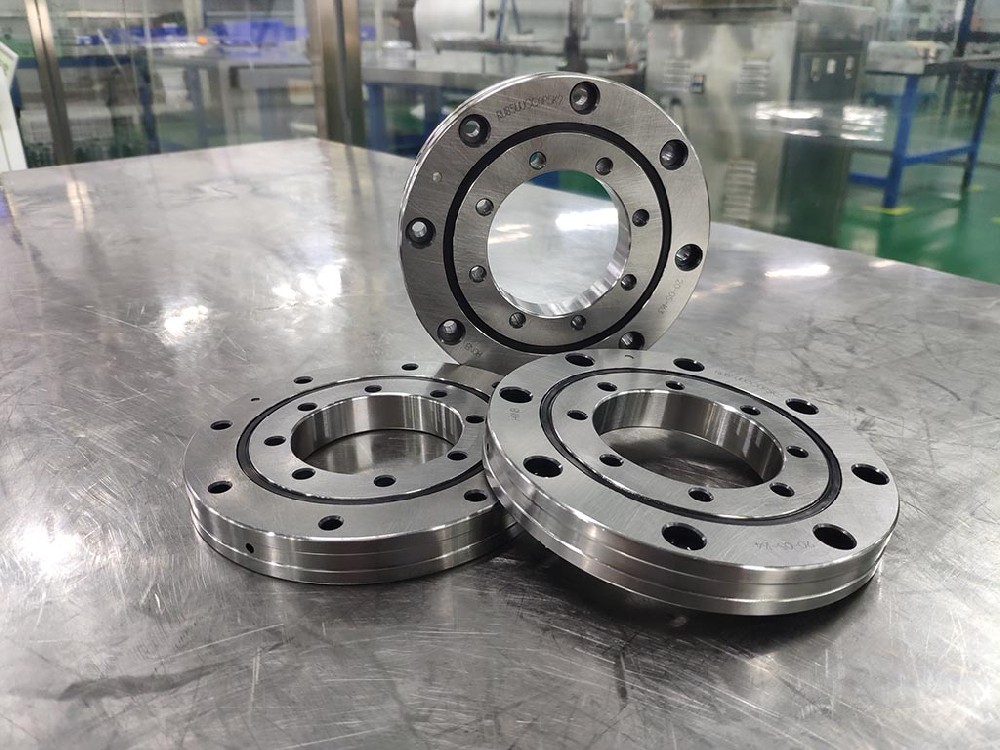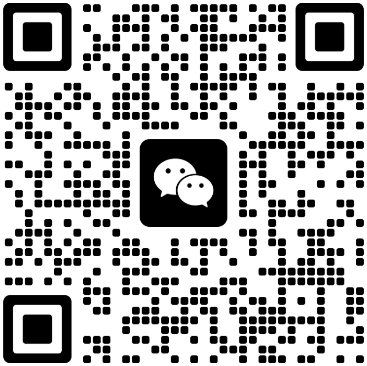With the rapid development and increasing maturity of domestic high-precision processing equipment, more and more traditional designs are abandoned on high-precision CNC processing equipment such as CNC indexing plates, vertical machining centers, vertical lathes, grinders, etc., and better cross roller bearings are adopted. It has the characteristics of high rotation accuracy and speed, large load-bearing capacity, small size, strong rigidity, etc., and has a wide range of uses and advantages that other bearings cannot match.
Crossed roller bearings are also called cross-crossed roller bearings. The rolling elements generally use cylindrical rollers or tapered rollers to cross and cross each other on the raceway. The rollers are separated by retainers or isolation blocks. This cross-arranged roller structure allows a single bearing to withstand various loads such as axial loads, radial loads and overturning moments. Compared with traditional structural bearings, the rigidity is increased by 3-4 times. It is suitable for various industrial rotating parts, rotary workbenches and other applications.
RBH type (integral inner and outer rings, without mounting holes), since there are no mounting holes on the outer and inner rings, flanges and support seats are required for installation. In addition, since the outer ring and the inner ring are both integral structures, installation has no effect on performance, so stable rotation accuracy and torque can be obtained, which is suitable for occasions where the outer ring and the inner ring rotate but there is a requirement for miniaturization.
RU type (integral inner and outer rings, with mounting holes), since both the outer ring and the inner ring have mounting holes, no fixed flange and support seat are required during installation. In addition, since the outer ring and the inner ring are both integral structures, installation has almost no effect on performance, so stable rotation accuracy and torque can be obtained, which is suitable for occasions where the outer ring and the inner ring rotate.
The inner and outer rings of the RW bearing adopt an integrated structural design. Since the rolling surface is double-rowed and small-diameter rollers are used, the number of rollers is about 5 times that of the conventional cross roller ring RU type* (RW 228 type). While maintaining compactness, improving rigidity and accuracy, the torque is also reduced. Since the size and number of mounting bolt holes are optimally designed, the rolling surface deformation caused by installation can be reduced, thereby obtaining stable rotation performance.
RW bearings are precision bearings with double-row cylindrical roller structure. The rolling elements are distributed face to face in the two-row raceway at a pressure angle of 45°, and the angle between the two rows of rolling elements is 90 degrees vertical. The thickness of the bearing makes the bearing have better overall stiffness and ring strength, and it is not easily affected by the mating parts during installation and is easier to install. The bearing can be installed in applications with high stiffness requirements, such as turntables and milling heads.
Crossed tapered roller bearings consist of two rows of bearing raceways and rollers that are perpendicular to each other. The rollers are arranged alternately on the raceways, and the bearing assembly height is slightly higher than that of single-row tapered roller bearings. In addition, the inclination angle of the bearing raceway and the geometry of the tapered rollers protect the bearing and will not cause stress concentration problems during use. Finally, the effective span of the cross tapered roller bearing is many times larger than the bearing width.
Crossed tapered roller bearings can withstand high overturning moments and are suitable for machine tool turntables (vertical lathes and grinders). These bearings are also suitable for other installation structures with limited space or occasions requiring a very low center of gravity for rotation.
RAU type: The cylindrical rollers of the RAU series of uniform cross-section thin-walled cross roller bearings are arranged crosswise on the V-shaped raceway, and the rollers are separated by isolation blocks. This cross-arranged roller structure allows a single bearing to withstand various loads such as axial load, radial load and overturning moment. In addition, since the inner and outer rings are both integral structures, they can be used for inner ring rotation or outer ring rotation.
Because the outer dimensions are minimized to the maximum, and the bearings have high rigidity, rotation accuracy and composite load-bearing capacity, they are most suitable for the joints or rotating parts of industrial robots, direct drive motors, medical equipment, measuring instruments and other fields.


